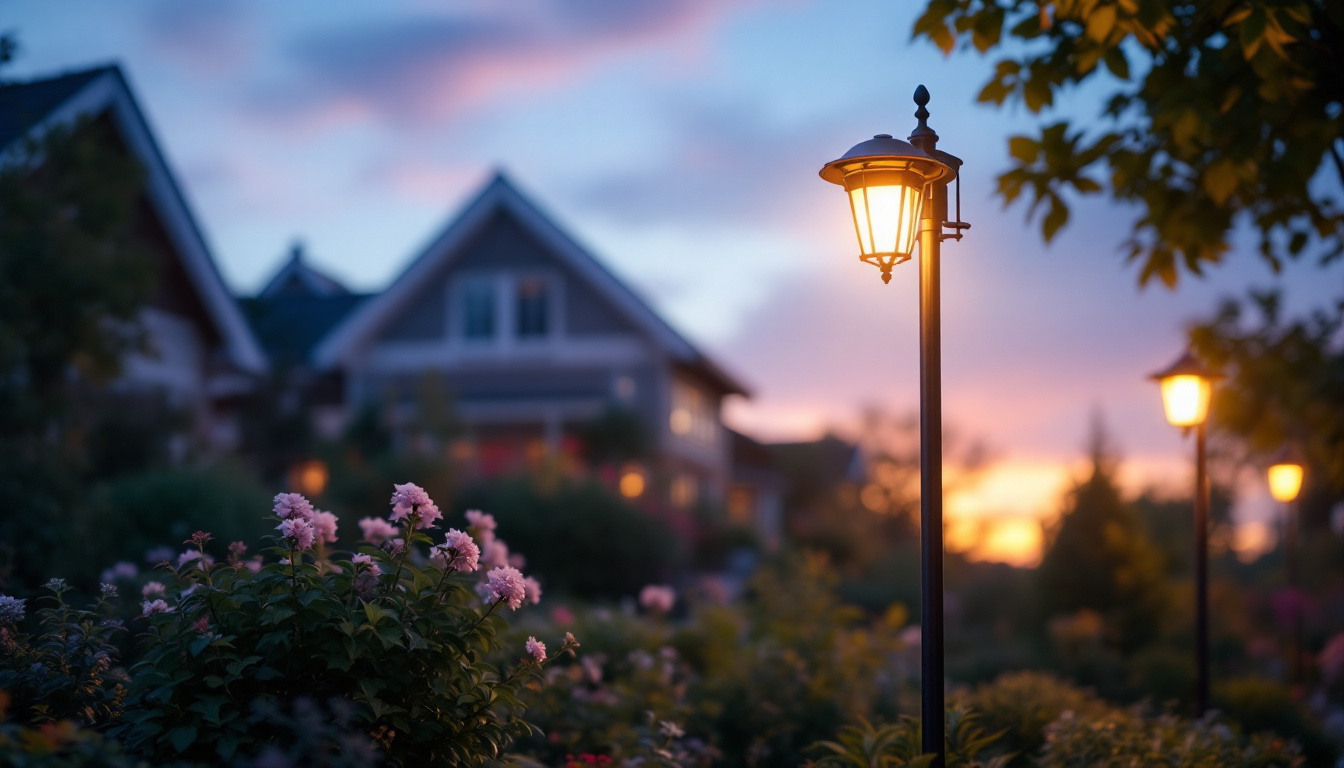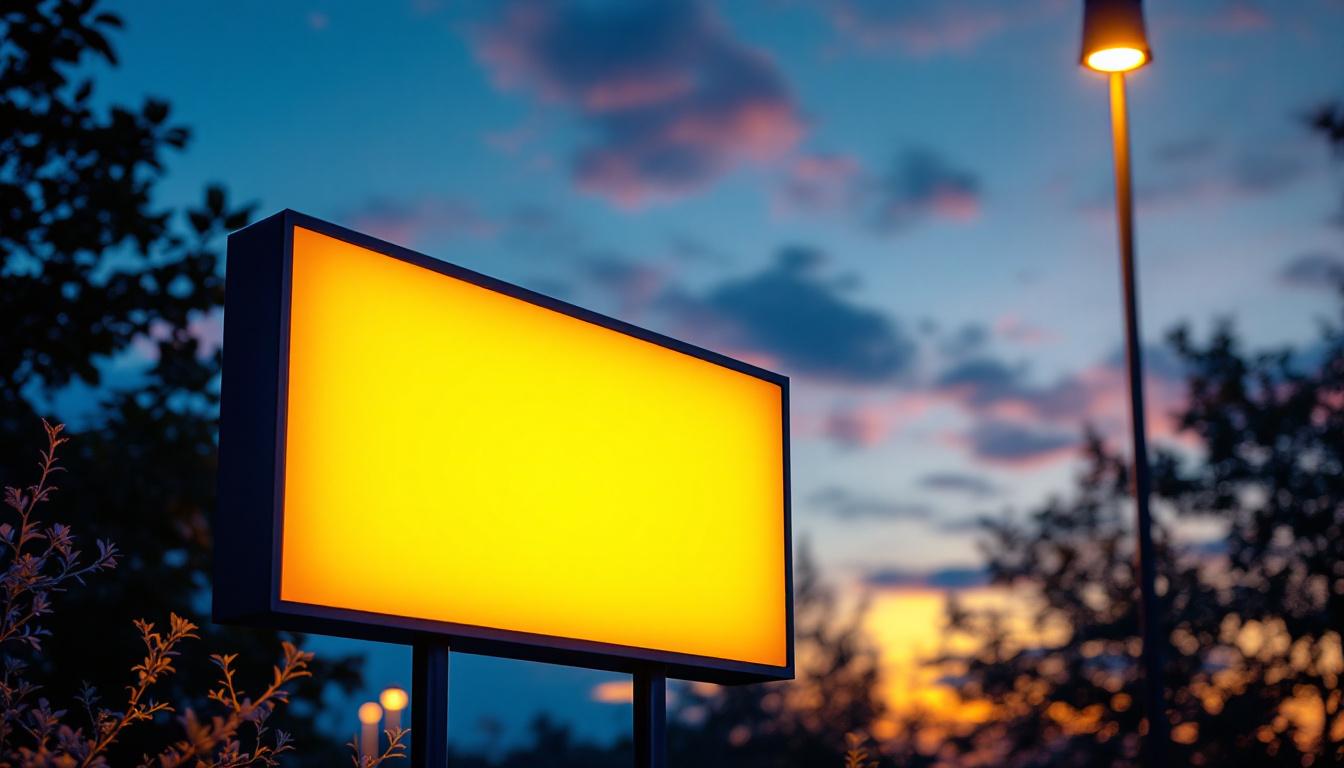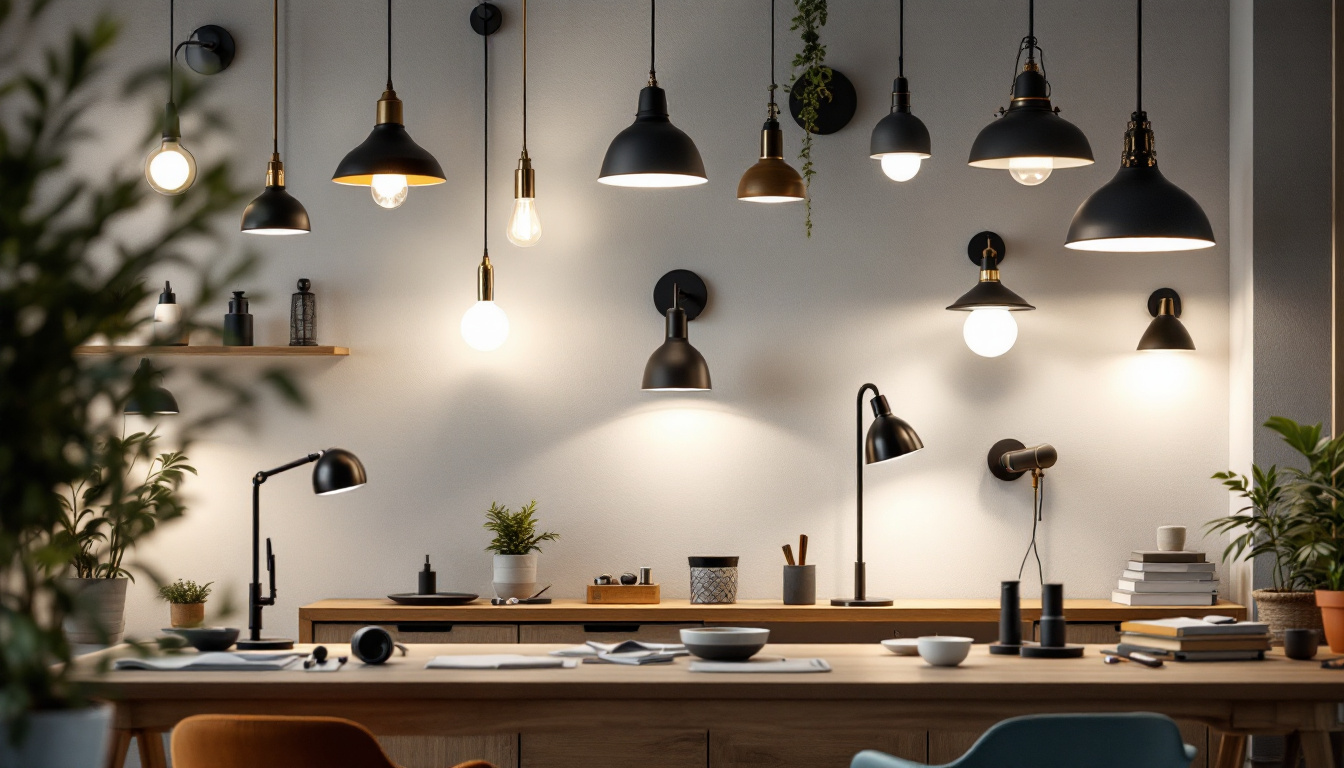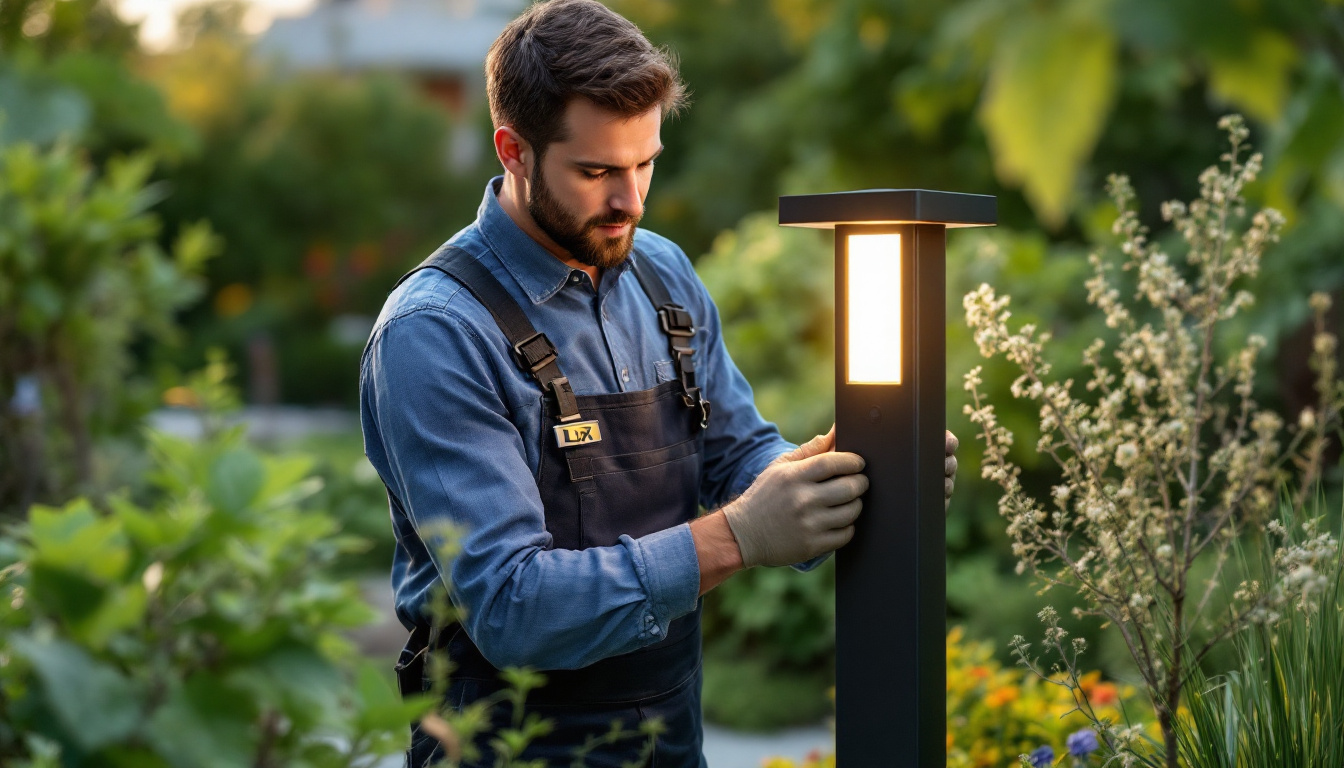
Outdoor lighting plays a pivotal role in enhancing the safety, aesthetics, and functionality of residential and commercial spaces. Among the various outdoor lighting options, lamp posts stand out as a versatile solution that can transform any environment. For lighting contractors, understanding the nuances of lamp post installation, design, and maintenance is essential for delivering quality service to clients. This article delves into crucial insights that every lighting contractor should consider when working with outdoor lamp posts.
When it comes to lamp posts, there is a diverse range of types available in the market, each designed for specific applications and aesthetics. Familiarity with these types is fundamental for contractors aiming to meet client needs effectively.
Traditional lamp posts often feature classic designs, such as ornate scrollwork and vintage finishes, making them ideal for historical neighborhoods or areas aiming for a nostalgic feel. On the other hand, modern lamp posts tend to have sleek, minimalist designs that complement contemporary architecture. Recognizing the aesthetic preferences of clients can significantly influence the selection process. For instance, a traditional lamp post might be adorned with decorative elements like lantern-style fixtures and wrought iron bases, evoking a sense of charm and warmth, while a modern design might incorporate LED technology and geometric shapes, appealing to those who prefer a clean, uncluttered look.
Material choice is another critical aspect of lamp post selection. Common materials include aluminum, steel, fiberglass, and concrete. Aluminum is lightweight and resistant to corrosion, making it a popular choice for residential applications. Steel, while heavier and more durable, may require additional maintenance to prevent rusting. Fiberglass offers flexibility in design and is often used in coastal areas due to its resistance to saltwater. Understanding the pros and cons of each material can help contractors recommend the most suitable options for their clients. Additionally, the choice of material can also affect the lamp post’s longevity and overall maintenance costs, which are important factors for both residential and commercial clients. For instance, while concrete posts may offer exceptional durability, their installation can be labor-intensive and costly, making them more suitable for permanent fixtures in public spaces.
The height of a lamp post can significantly impact its effectiveness in illuminating an area. Generally, residential lamp posts range from 6 to 10 feet tall, while commercial installations may require taller options. Placement is equally important; lamp posts should be strategically positioned to avoid shadows and ensure even light distribution. Contractors should assess the specific needs of the space and recommend appropriate heights and placements accordingly. Furthermore, factors such as the surrounding landscape, existing structures, and the intended use of the area—whether for pedestrian traffic, vehicle navigation, or aesthetic enhancement—should also be taken into account. For example, in a park setting, lamp posts may be spaced further apart to create a more open atmosphere, while in a parking lot, closer spacing may be necessary to ensure safety and visibility during nighttime hours. Additionally, the integration of smart lighting technology can enhance both the functionality and energy efficiency of lamp posts, allowing for adaptive lighting based on real-time conditions and usage patterns.
Proper installation is crucial for the longevity and functionality of lamp posts. Contractors should adhere to best practices to ensure a successful installation process.
Before installation begins, a thorough site assessment is essential. This includes evaluating the terrain, existing structures, and potential obstacles that may hinder light distribution. Contractors should also consider local regulations and zoning laws that may affect lamp post placement. Additionally, assessing the environmental impact is important; for instance, understanding how the installation might affect local wildlife or vegetation can help in making informed decisions about lamp post locations. Conducting a light pollution analysis can also guide the placement to minimize disruption to the surrounding area.
The foundation is the backbone of any lamp post installation. A solid foundation ensures stability and prevents leaning or toppling. Contractors should dig a hole that is at least one-third the height of the lamp post and fill it with concrete to secure the base. Proper curing time should be observed to ensure the foundation is robust before mounting the lamp post. Furthermore, incorporating drainage solutions around the foundation can help prevent water accumulation, which could compromise the integrity of the installation over time. Using gravel or drainage pipes can facilitate water flow away from the base, enhancing the overall durability of the lamp post.
Electrical wiring is a critical component of lamp post installation. Contractors must ensure that all wiring meets local electrical codes and standards. It is advisable to use weather-resistant materials and components to prevent damage from the elements. Additionally, incorporating smart lighting technology can enhance functionality and energy efficiency, making it an attractive option for many clients. Beyond just energy efficiency, smart technology can provide features like motion sensors and timers, allowing for adaptive lighting that responds to environmental conditions or human activity. This not only improves safety and security but can also lead to significant cost savings on energy bills over time.
While functionality is paramount in outdoor lighting, aesthetics should not be overlooked. Striking a balance between the two can elevate the overall appeal of a space.
Different lighting techniques can be employed to achieve various effects. For instance, uplighting can create dramatic shadows and highlight architectural features, while downlighting provides even illumination for pathways and driveways. Understanding the purpose of each area will guide contractors in recommending the most effective lighting techniques.
The color temperature of the light emitted by the lamp post can significantly affect the ambiance of an outdoor space. Warm white light (2700K-3000K) creates a cozy atmosphere, ideal for residential areas, while cooler temperatures (4000K-5000K) are better suited for commercial spaces that require bright, clear illumination. Additionally, understanding lumens—the measure of light output—will help contractors select fixtures that provide adequate brightness for the intended application.
With the rise of smart technology, integrating smart lighting solutions into lamp post designs is becoming increasingly popular. These systems allow for remote control, dimming capabilities, and even scheduling, providing clients with greater flexibility and energy savings. Contractors should stay informed about the latest smart lighting technologies to offer innovative solutions to their clients.
Regular maintenance is vital for ensuring the longevity and efficiency of outdoor lamp posts. Contractors should educate clients on proper maintenance practices and be prepared to troubleshoot common issues.
Conducting routine inspections can help identify potential problems before they escalate. Contractors should recommend checking for loose fixtures, damaged wiring, and bulb replacements at least twice a year. Additionally, cleaning the lamp post and surrounding area can prevent dirt buildup that may hinder light output.
Common issues with lamp posts include flickering lights, inconsistent brightness, and complete outages. Flickering lights often indicate a loose connection or a failing bulb, while inconsistent brightness may be due to voltage fluctuations. Contractors should be equipped with troubleshooting skills to diagnose and resolve these issues promptly.
As technology advances, upgrading fixtures can enhance the performance and efficiency of existing lamp posts. Contractors should stay updated on the latest advancements in LED technology and energy-efficient solutions, as these upgrades can significantly reduce energy costs and improve lighting quality.
Compliance with local regulations and safety standards is paramount in outdoor lighting projects. Contractors must be well-versed in relevant codes to avoid legal issues and ensure client safety.
Each municipality may have specific regulations regarding outdoor lighting, including height restrictions, light pollution guidelines, and energy efficiency standards. Contractors should familiarize themselves with these codes to ensure that their installations are compliant and safe.
Safety should always be a top priority during installation and maintenance. Contractors should adhere to safety protocols, including wearing appropriate personal protective equipment (PPE) and ensuring that electrical systems are de-energized before working on them. Educating clients about safety practices, such as keeping pathways clear and ensuring adequate lighting in high-traffic areas, can further enhance safety.
Engaging clients and educating them about outdoor lighting options can lead to more informed decisions and greater satisfaction with the final result.
Offering consultation and design services can help clients visualize their outdoor lighting options. Utilizing design software or creating mock-ups can assist in demonstrating how different lamp post styles and placements will affect the overall look of their space. This not only enhances client satisfaction but also fosters trust and credibility.
Providing clients with maintenance guides and tips can empower them to take care of their outdoor lighting systems. This can include information on bulb replacement, cleaning procedures, and troubleshooting common issues. By equipping clients with knowledge, contractors can ensure that their installations remain functional and aesthetically pleasing for years to come.
Outdoor lamp posts serve as more than just functional lighting; they are integral to creating safe and inviting spaces. For lighting contractors, understanding the various types of lamp posts, installation best practices, design considerations, and maintenance requirements is essential for delivering exceptional service. By staying informed about industry trends and technological advancements, contractors can provide clients with innovative solutions that enhance both the functionality and aesthetics of outdoor environments.
Ultimately, the goal is to create outdoor spaces that are not only well-lit but also reflect the unique style and needs of each client. By leveraging the insights shared in this article, lighting contractors can elevate their services, ensuring that every installation is a success.
Ready to take your outdoor lighting projects to the next level? At LumenWholesale, we provide lighting contractors with the finest selection of spec-grade lamp posts and outdoor lighting solutions. Our commitment to quality and affordability ensures that you can light up any space without breaking the bank. Say goodbye to local distributor markups and hello to our unbeatable wholesale prices, free shipping, and exceptional service. Elevate your lighting installations with the confidence that comes from partnering with the best in the business. Discover the perfect blend of quality, affordability, and convenience today by visiting Wholesale Lighting at the Best Value and make your next project shine with LumenWholesale.

Discover the ultimate guide to understanding light lumens with our comprehensive chart.

Discover the essential insights lighting contractors need to meet client expectations for outdoor sign lighting.

Discover expert insights from lighting contractors on selecting the perfect shop light fixtures.

Discover expert insights and best practices for installing LED post lights in this comprehensive guide tailored for lighting contractors.